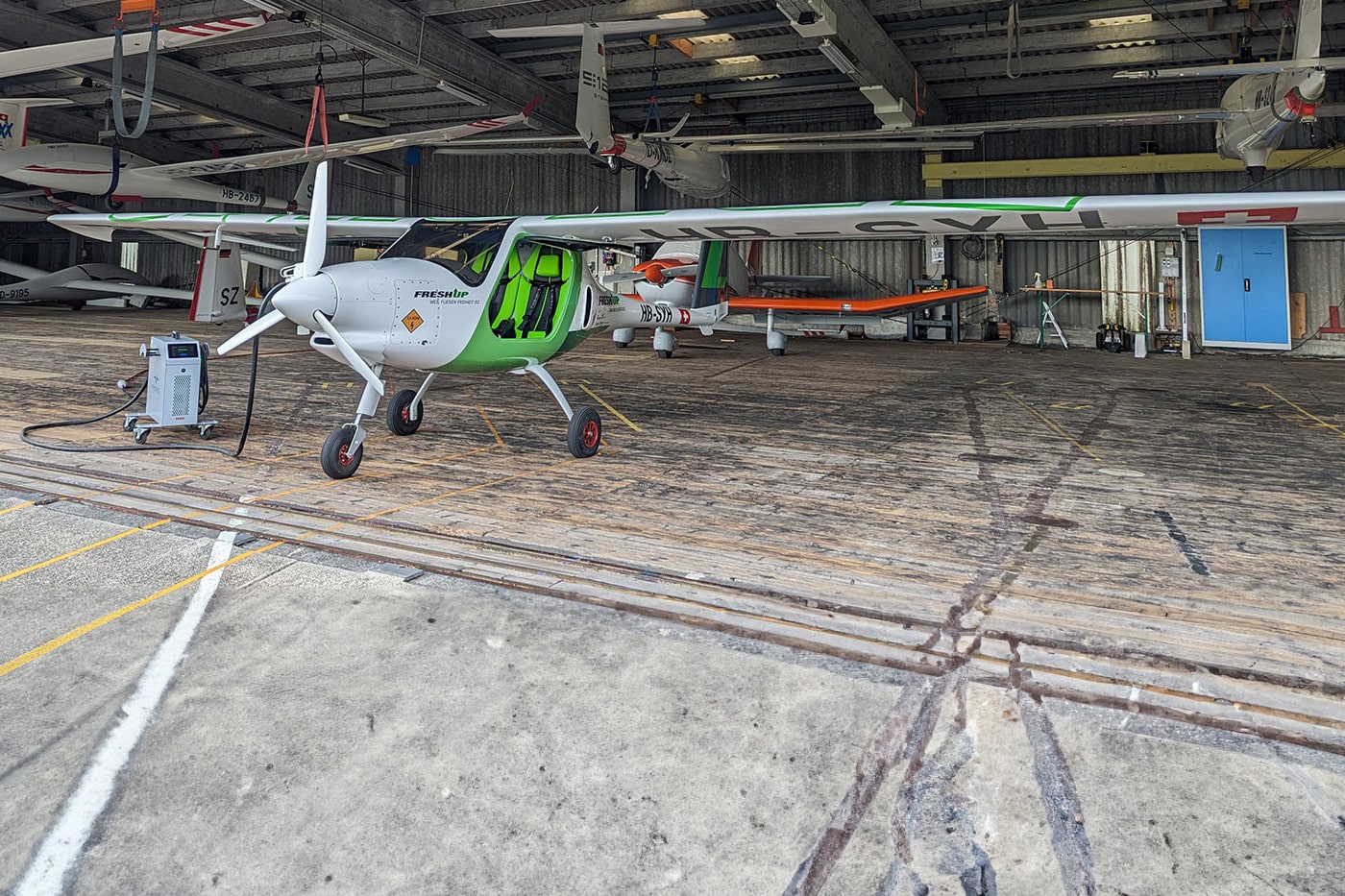
Pipistrel Velis Electro – a report from above the clouds
The aircraft
At the Schänis airfield, Westermann welcomed our reporter directly into the only hangar. There are a few motor planes and various gliders hanging from the ceiling. In the middle is a plane that looks quite similar to all the others – with a tiny difference: a charging cable is plugged in just behind the propeller. That is the Pipistrel Velis Electro, the electric plane with which we are about to take to the skies.
An ultralight aircraft (LSA) has an empty weight of 428 kg, a maximum take-off weight of 600 kg, a top speed of 200 kph and a wingspan of just under 11 metres. For the untrained eye, it can hardly be distinguished from its combustion engine sibling, the Pipistrel Virus. The only obviously noticeable thing is the different propeller, which is two-bladed on the combustion engine and three-bladed on the electric plane. Inside, the differences are more obvious: the Velis has only one thrust control, while the Virus has three, and the instruments are quite different. Of course, many of the displays for the combustion engine can be omitted in the electric version. And where the Virus has a sizable luggage compartment, the Velis has one of the two batteries. The two models also differ in price, but surprisingly, the electric plane is actually cheaper: flying with the combustion engine version costs 252 Swiss francs an hour in Schänis (about 263 euros), while an hour of electric flying costs “only” 186 CHF (about 194 euros).
Preparations for take-off
While the GB/T charging station shovels a few last electrons into the small 22 kWh battery, Westermann worked through his checklists, checking the propeller, flaps, rudders and wings for mobility and damage. Once the charging process is finished, they pushed the Pipistrel out onto the apron. After the two climbed the relatively narrow cabin, Westermann continues his checklists. Among other things, he points out the battery display, on which he checks the voltage level of the cells: just under 4.2 volts, the displayed 99 per cent SoC and 01h 00min Endurance are correct.
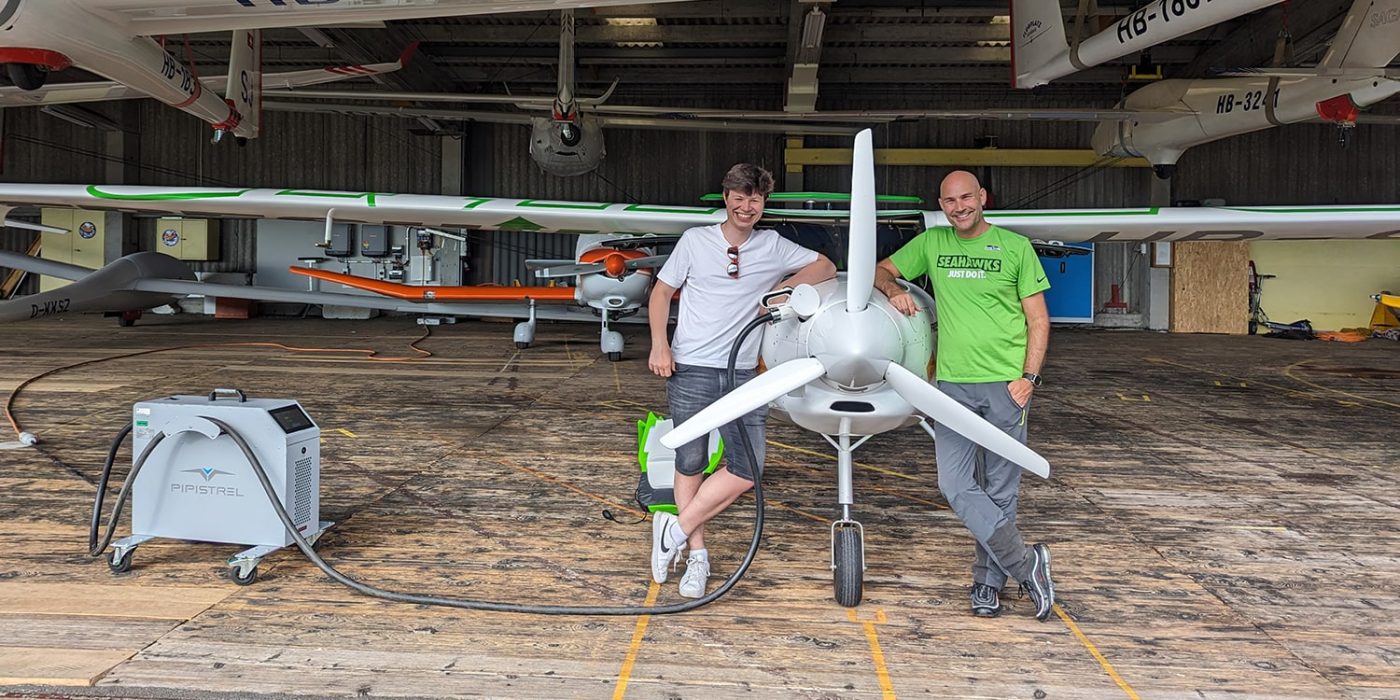
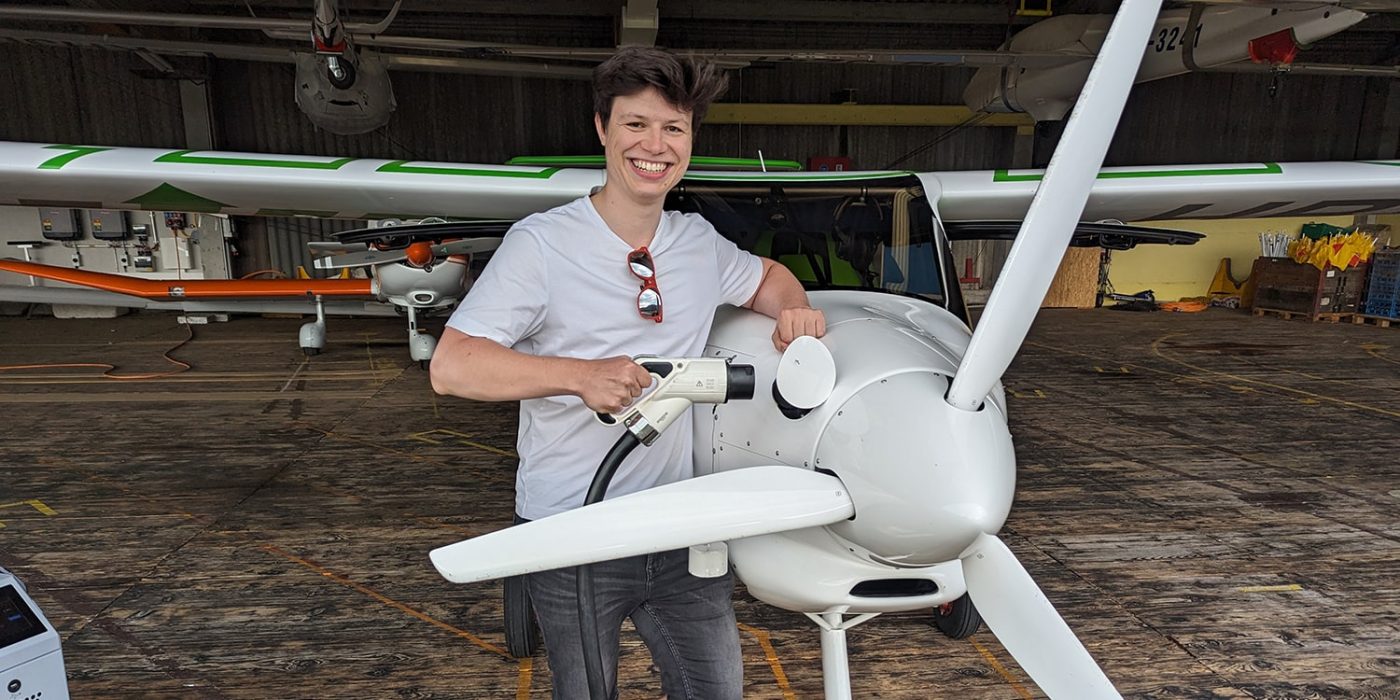
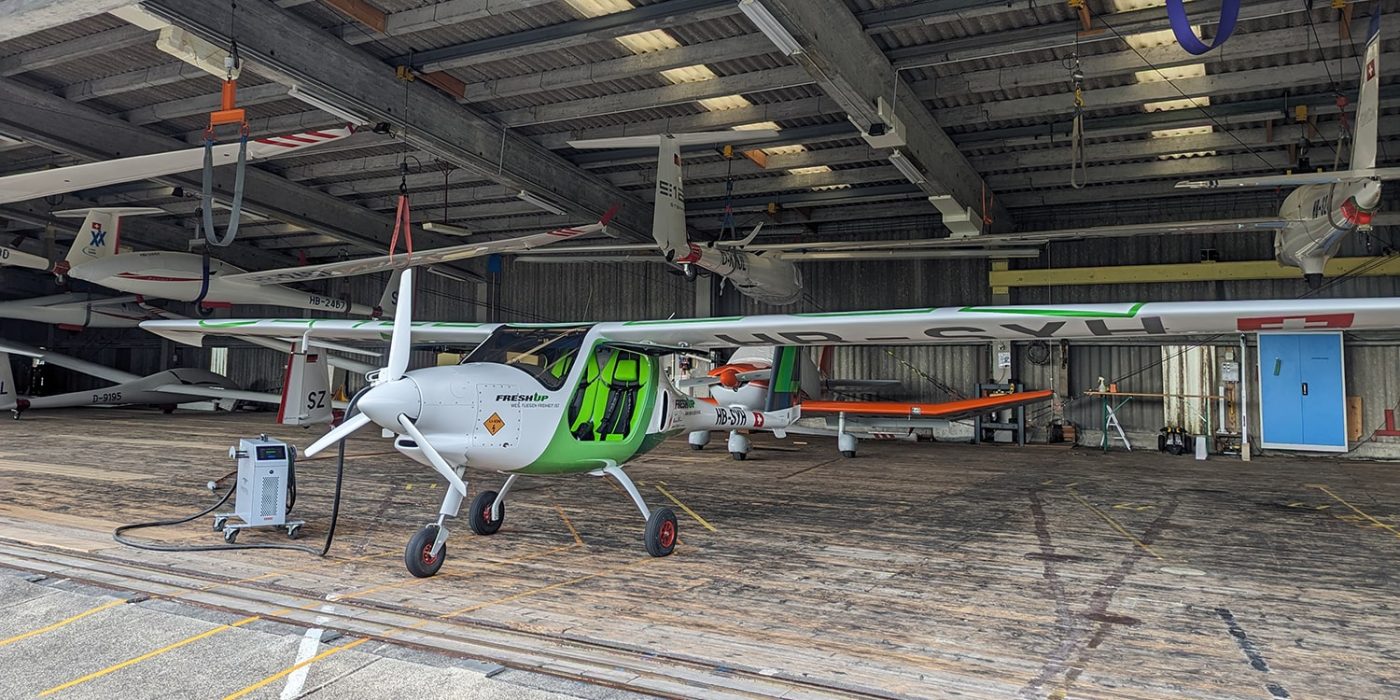
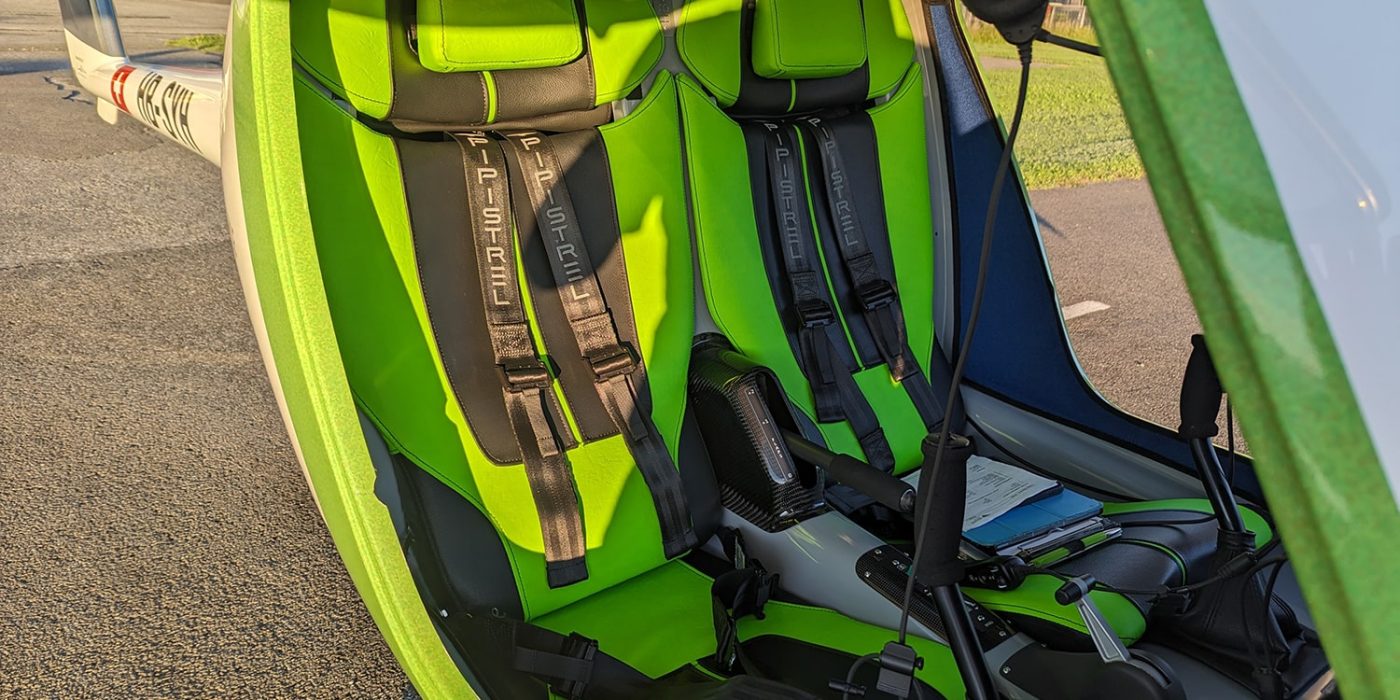
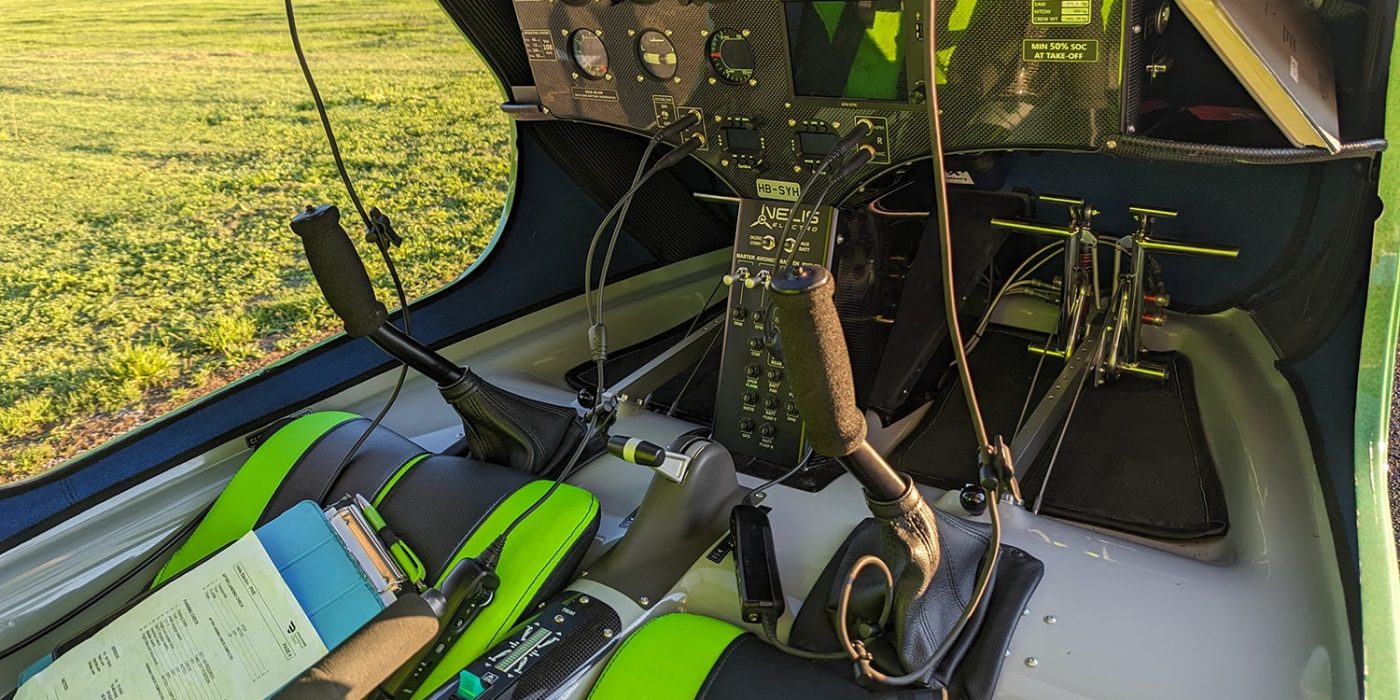
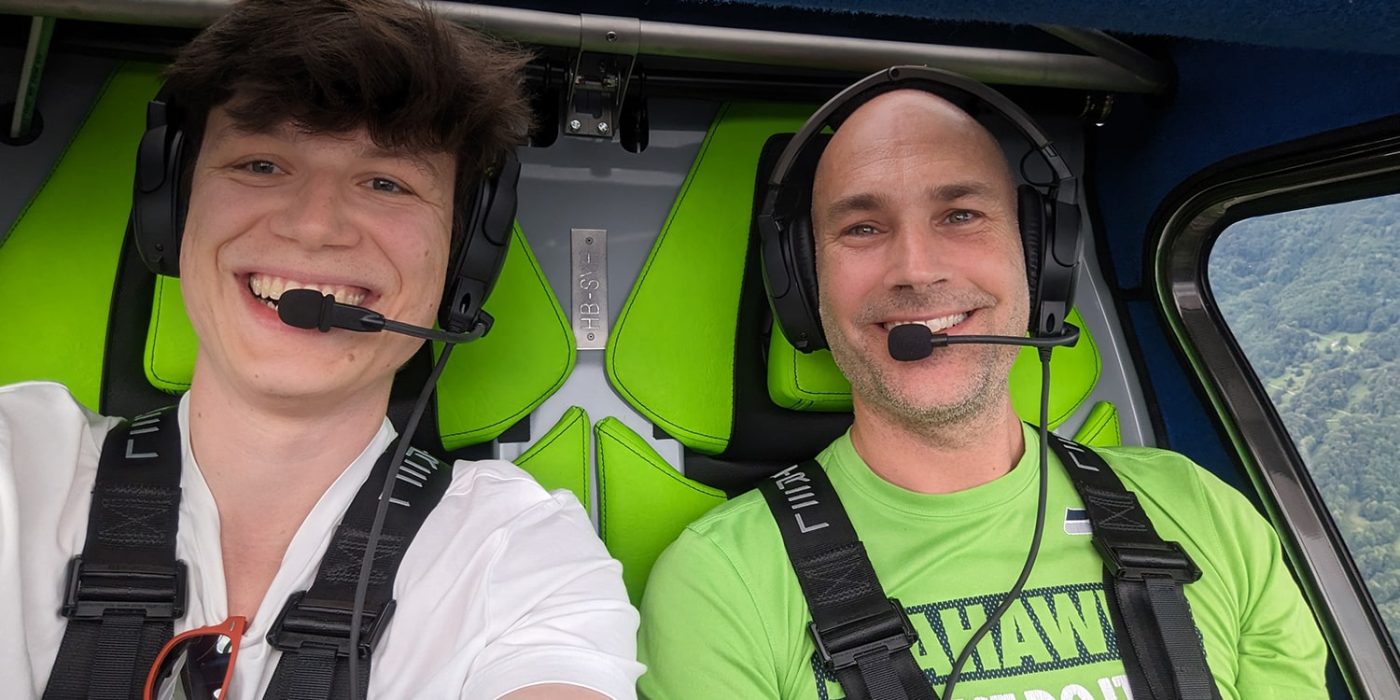
The flight
Westermann starts the engine, and you hear… nothing. What is already amazing with electric road vehicles, feels like a small miracle with electric aircraft. The other powered aircraft on the airfield make a lot of noise with their combustion engines. It stinks, roars, smokes and vibrates. The Velis’ electric motor, on the other hand, is completely silent. You hear only the wind noise from the propeller, similar to a fan. After taxiing across the airfield to the end of the runway, Westermann turns around the aircraft, and gives full power. The engine is barely audible in the rumble of the landing gear (whose wheels not only look like the tyres of a quad, but are actually from the same manufacturer) on the somewhat uneven runway. As soon as the plane leaves the ground, it is suddenly quiet. Most of the vibrations came from the tarmac, and the Velis is surprisingly silent in the air. Even the wind noise from the propeller is overshadowed by the flow noise on the fuselage itself – purely acoustically, a layman could think he was sitting in a glider.
During the climb, the forward view is somewhat restricted, the nose of the plane stretches steeply into the air, so the passenger and pilot mainly see the sky, while the mountains pass by to the left and right. For an aircraft of this class, the Velis is comparatively well powered, Westermann explains, making the large angle of climb possible.
“Feel this”
Westermann tilts the Velis back to horizontal at 8,800 feet (just under 2,700 metres), leaving the aircraft in cruising flight. “Feel this,” says the pilot, encouraging our reporter to carefully move the control stick with thumb and forefinger. They turn a very gentle curve, surprising our reporter at how directly and sensitively the little plane reacts. A few millimetres of stick movement are enough for the machine to change direction considerably. Impressive, but too much all at once.
Surprisingly economical in consumption
While flying a sharp turn over Lake Sihl, the plane had already consumed quite a bit of power. Naturally, the climb consumes the most, and the battery is still about half full. Now, in a cruising flight, the power is 17 kW, at 140 kph after all, equivalent to a consumption of a slim 12 kWh/ 100 km. Electric flying is faster AND more efficient than driving an electric car, which seems surprising, even though it makes perfect physical sense that a plane weighing just under 600 kg with passengers has to consume less than a two-tonne car with its much larger frontal area. Thus, the narrow cockpit also has its advantages.
A roller coaster at 3,000 metres altitude
After an impressive panoramic view of Lake Zurich, the plane slowly returned to Schänis. Shortly before the end of the sightseeing flight, Westermann demonstrated just how agile the little Pipistrel is. A sharp right turn is followed by a sharp left turn, both with a radius of just under 100 metres – a pretty tight turning radius. This is then followed by a small parabolic flight: full power towards the sky, no power, nose down and a few seconds of weightlessness. After this little “rollercoaster ride”, the aircraft begins its approach to Schänis with just under 35 per cent left in the battery. In a car, one would still be deeply relaxed, but Westermann explains that an electric glider is brought down with a lot of buffer. After all, a small glider airfield can always be blocked, and it may be necessary to switch to another airfield – in the air it is important not to run out of juice.
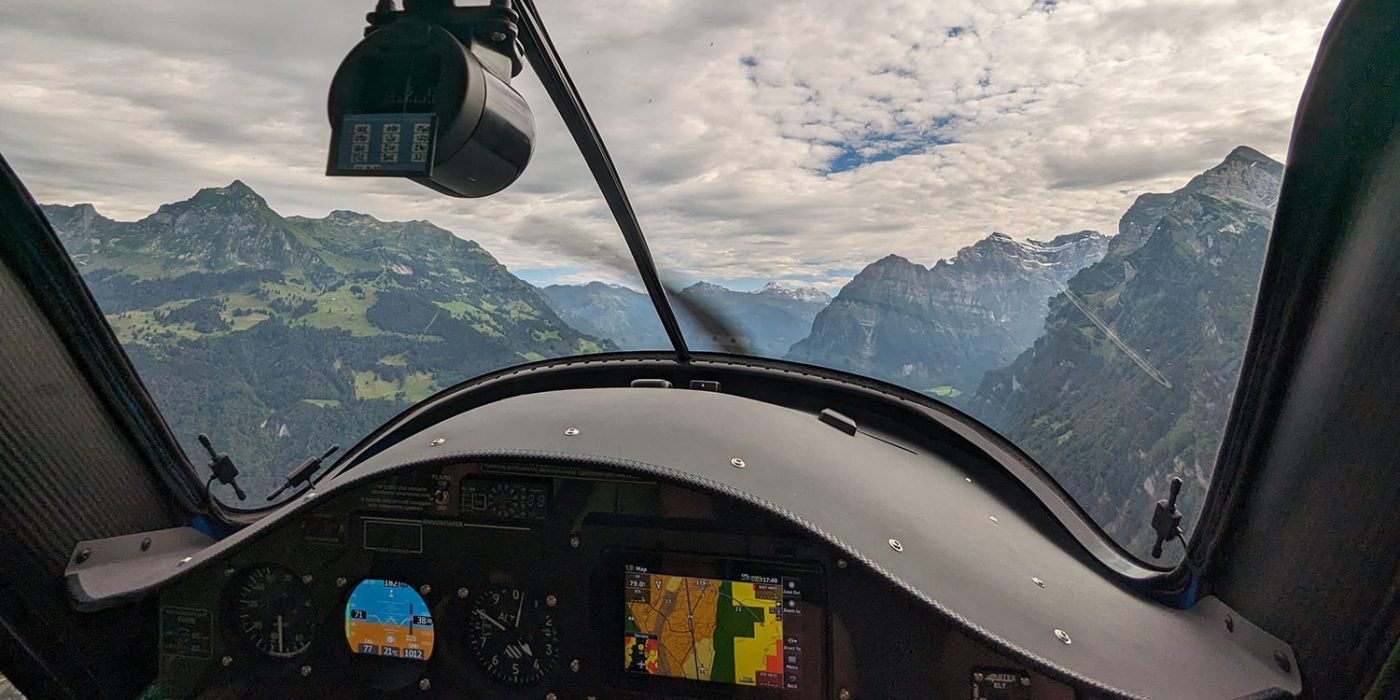
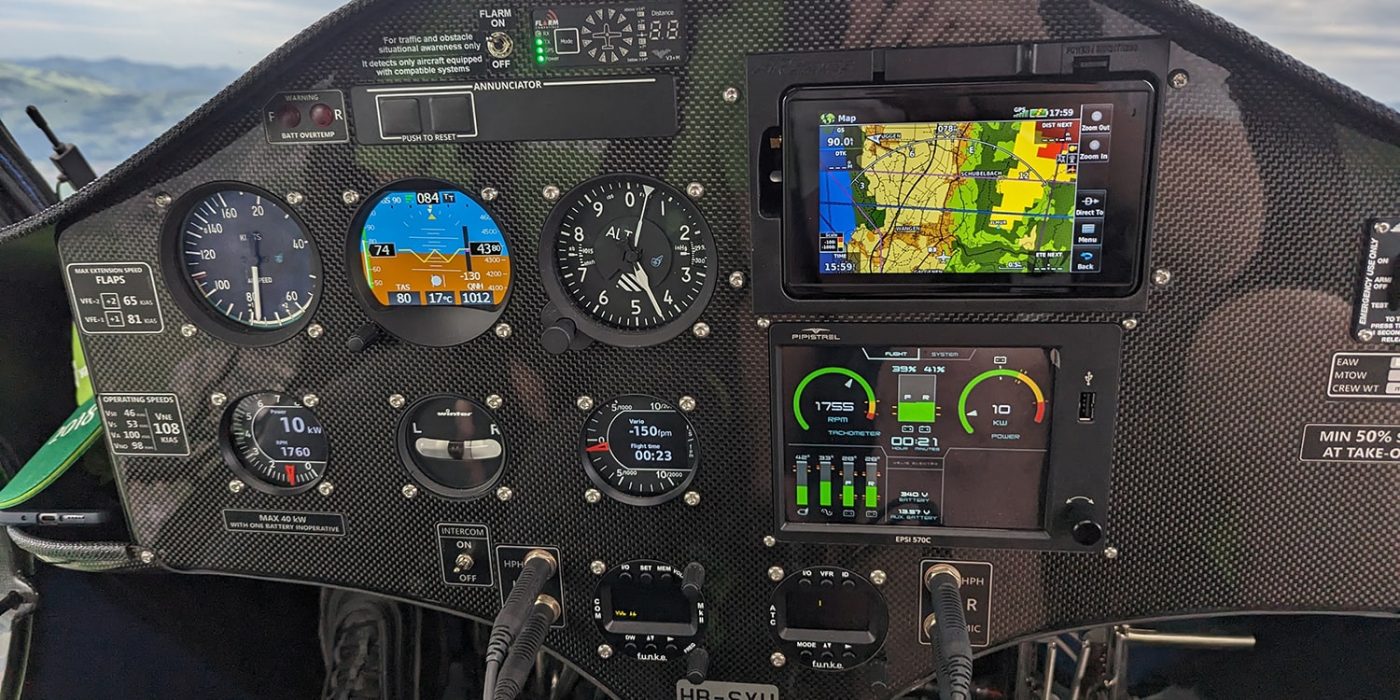
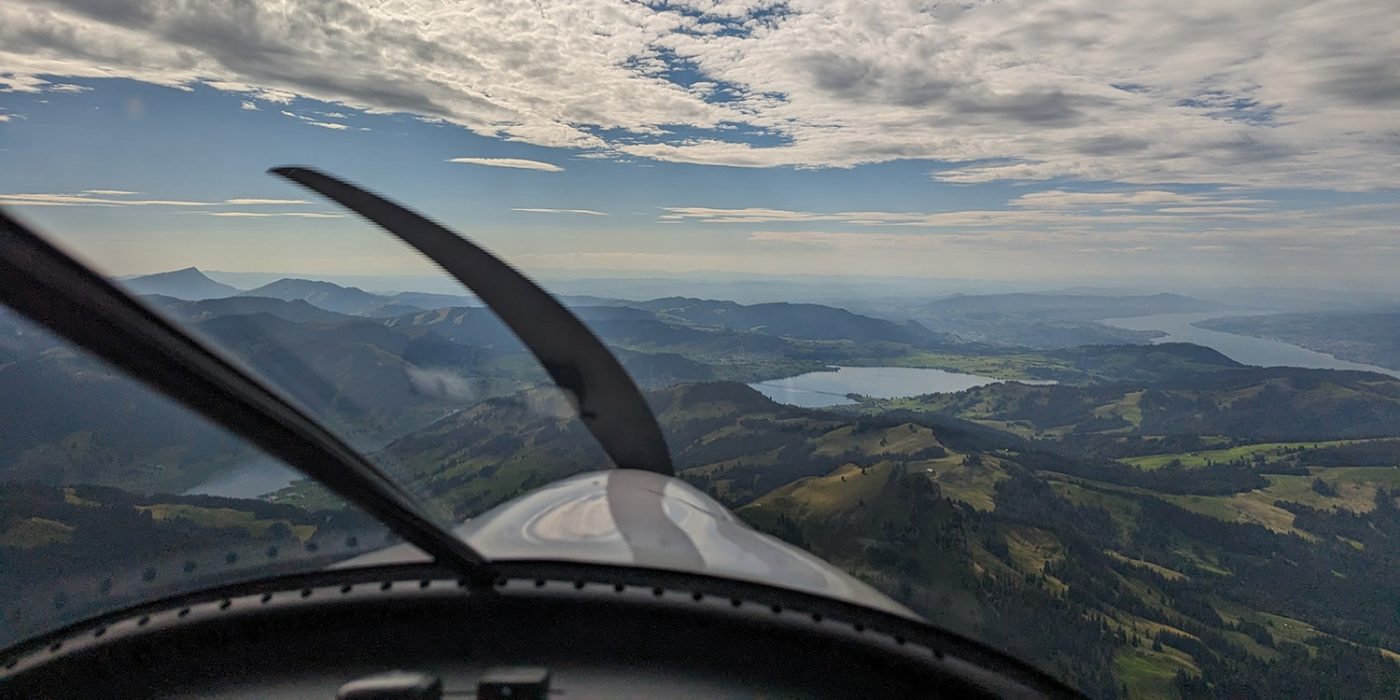
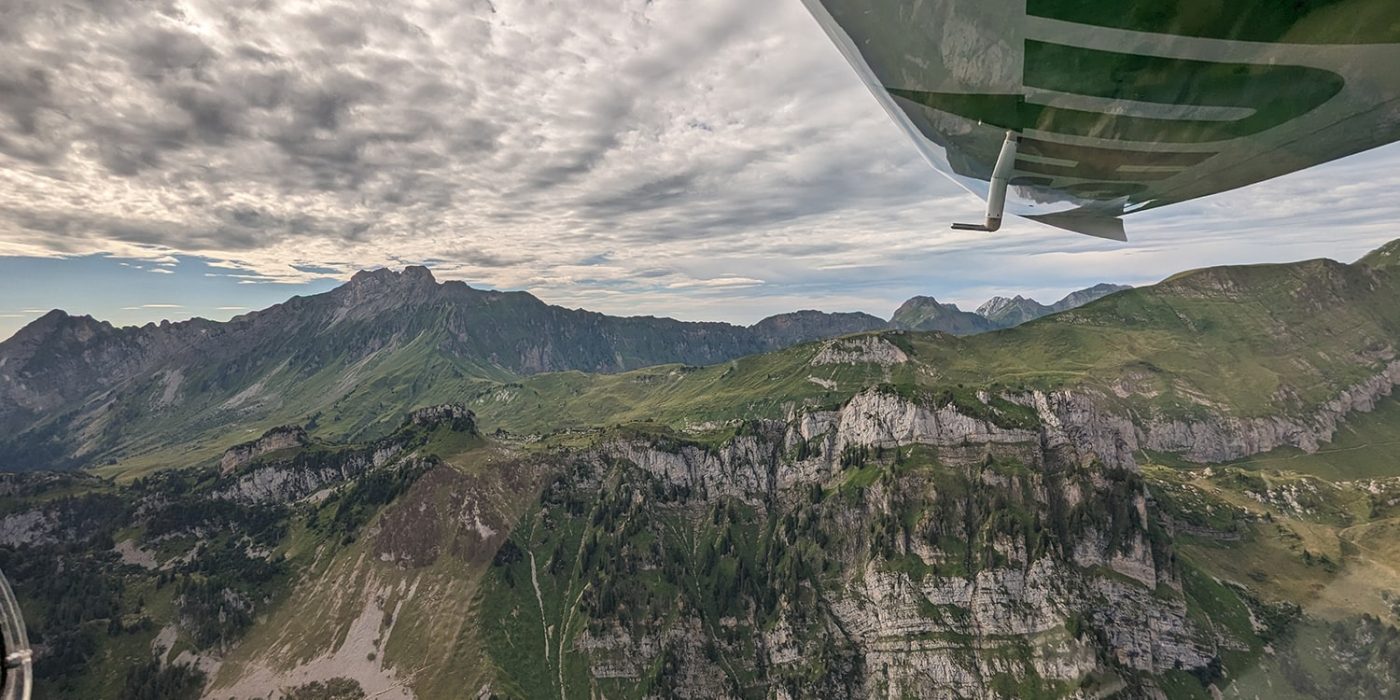
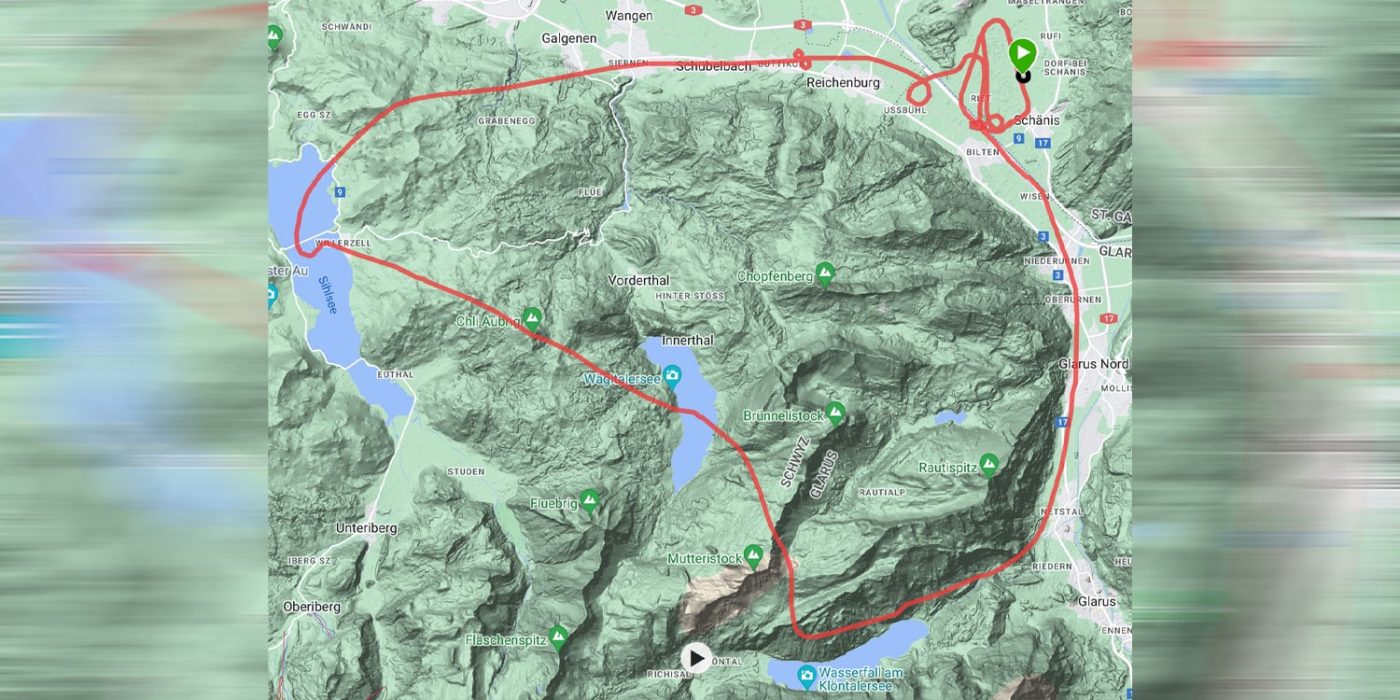
The aircraft is still too high and therefore requires a few circles to be flown around Schänis until, after a few minutes, the pilot set his sights on the runway. The runway is clear, and nothing else is happening on the tarmac, so Westermann uses the remaining energy to take off again and do another lap. But after that, it’s finally over, and the electric aircraft land 35 minutes after our take-off with just under 20 per cent in the battery. Then he goes through a series of checklists again, and shortly afterwards, switches off all devices.
It pays off
The fact that small electric aircraft work is well established. The only question is, where can they be used so far – apart from short sightseeing flights? Westermann chartered this example flight from a flight school because that is precisely where electric planes offer many advantages. Student pilots can train with an electric aircraft just as well as with a combustion engine, but without the noise pollution for the residents of the airfield (a massive relief given the numerous take-offs and landings required for pilot training). In addition, flight students do not have to concentrate on the complicated characteristics of an internal combustion engine, but can devote their full attention to flying, as the electric motor simply runs. A look at the bare figures also makes electric aviation attractive: the Velis is cheaper to buy, operate, and maintain. PV electricity from the hangar is cheaper than petrol, and the engine maintenance required every 100 flying hours is naturally much less with an electric engine than with a combustion engine (they even have to go to the workshop every 50 hours).
Pioneering work
Above all, the current electric two-seaters are one thing: pioneers for larger electric flying machines. Similar to how Tesla did the necessary pioneering work with the first Roadster so that the ID.3, the Model 3 and others can be on the road today, the two-seaters are just a first step in aviation. Even if it is clear that long-haul flights will not be able to manage without liquid fuels in the foreseeable future, there is nevertheless a prospect that in 10-15 years, at least domestic flights could become electric.
It was believed that the necessary battery density for this was not achievable for a long time, but that changed with CATL’s latest 500 Wh/kg battery. Small electric passenger planes have become tangible. In any case, the pilots of tomorrow can already learn to fly on electric aircraft today – that’s a good start.

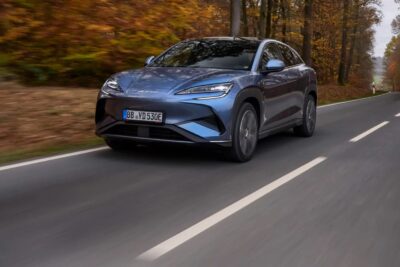
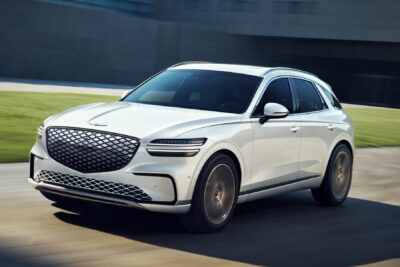
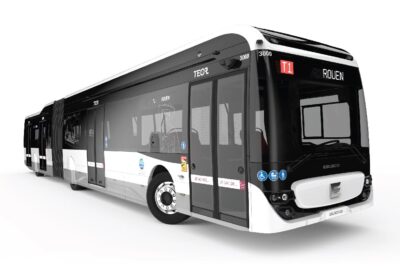
6 Comments